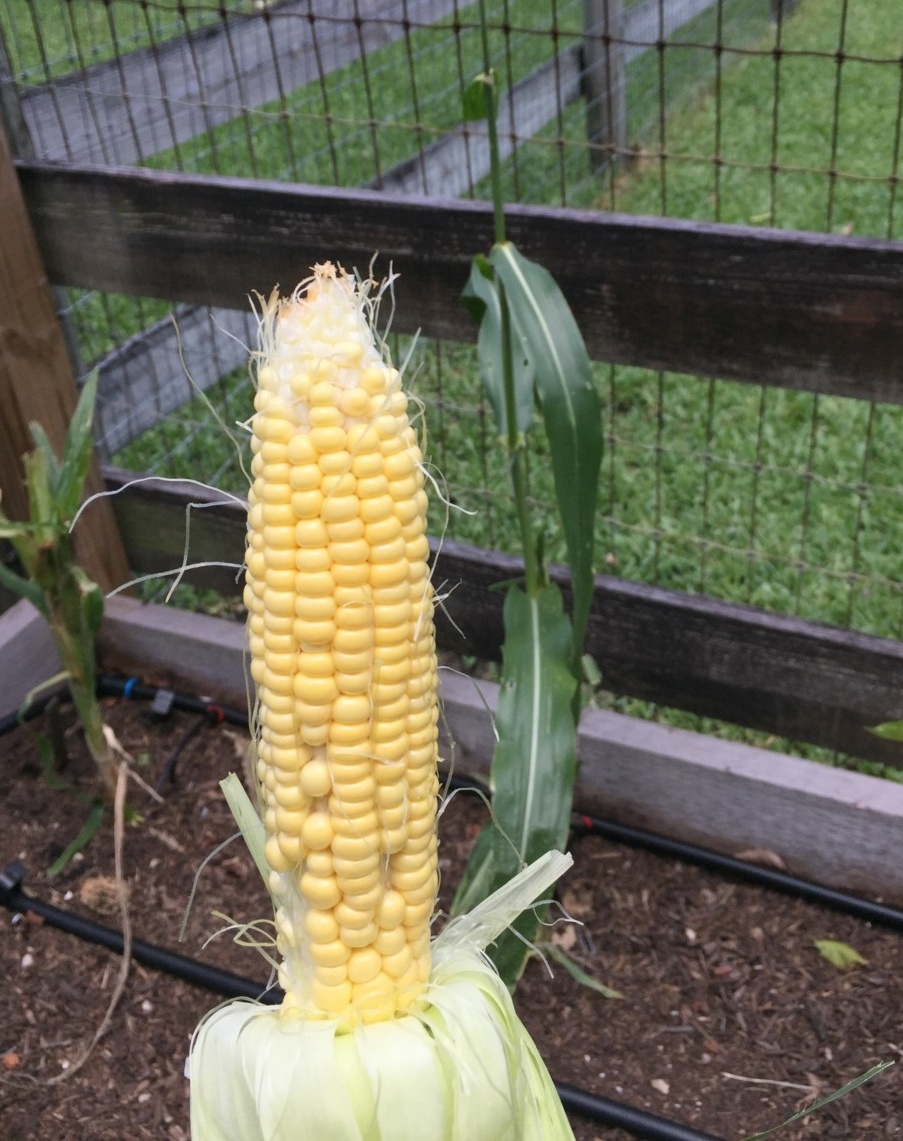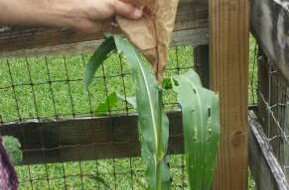 Some may say it was a failure but I say it is one step closer to future success! My one corn ear gives me hope and motivation to continue trying!! Corn is not an easy crop to grow, especially in limited space. Not only is it extremely vulnerable to pests, as you can see in the picture I had plenty of those, but corn also needs to be hand pollinated. I was prepared to hand pollinate the corn as I read online and saw on youtube. Click here for instructions for hand pollination.
Some may say it was a failure but I say it is one step closer to future success! My one corn ear gives me hope and motivation to continue trying!! Corn is not an easy crop to grow, especially in limited space. Not only is it extremely vulnerable to pests, as you can see in the picture I had plenty of those, but corn also needs to be hand pollinated. I was prepared to hand pollinate the corn as I read online and saw on youtube. Click here for instructions for hand pollination.
Corn plants are ready to be pollinated when the male tassels are fully expanded and the anthers begin to shed pollen. Once I noticed the tassels were expanded I placed a bag over it as instructed. But to my luck, after a month of no rain in South Florida, it decided to start raining. Rain ruins the pollinations process as the pollen can not be collected. Pollen is produced only during a one week period and that’s the only chance you get. Although I was convinced it was not going to work, any dry day there was during the week, I placed the bag over night, and if any, sprinkled the pollen over the silky shoots the next day. Only one day did I see a tiny bit of pollen come out. I didn’t see any pollen the rest of the days. On top of that, I had given up after I had discovered some ear worms were hiding in the leaves! and were making holes through the cobs. I removed the ear worms and sprayed organic insecticidal soap and neem oil. I was convinced this was a total disaster. No one said organic gardening is a breeze!! It is more time consuming and organic pesticides are not always as effective and fast as chemical pesticide. After I saw that no more pollen was being produced, I decided to just remove the stalk, and the ear which already had a hole from the worm. To my surprise the ear did have kernels!! Missing some but had enough to eat 🙂
Lessons learned:
-Keep a closer eye for ear worms, especially by peeling off the outer leaves once the silks starts to show. It is just a matter of moving the leaves and ear a bit to find them.
-Apply Bacillus Thuricide to the leaves and stalk to kill the worms. It is a natural chemical that kills worms on contact.
-Don’t underestimate the power of just a little pollen.
-If at first you don’t succeed try and try again.


